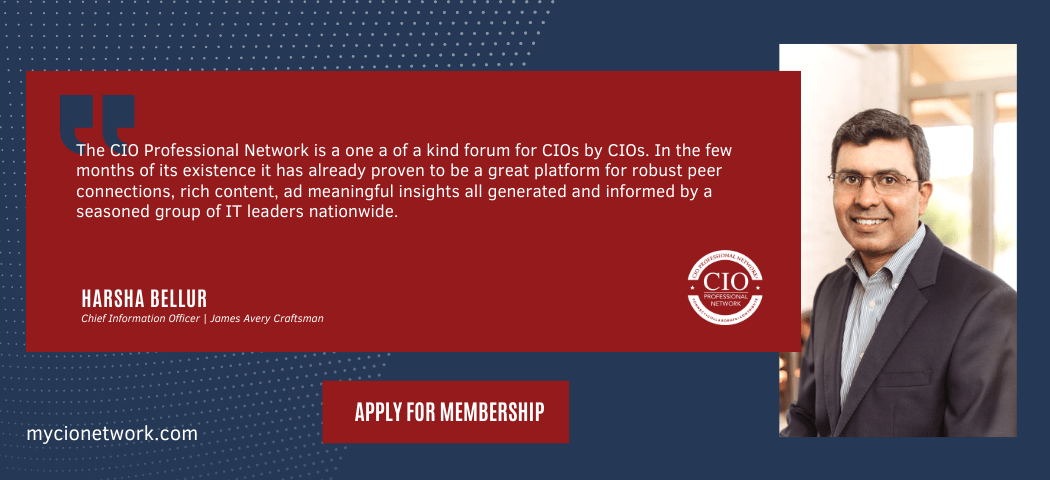Over the past 20 years, the role of Chief Information Officer has continued to evolve as technology leaders have assumed increasing levels of influence within their respective organizations and have claimed the much sought-after seat at the table.
Technology leaders understand that their role has moved beyond “keeping the lights on” and “aligning with the business.” Today’s top CIOs recognize that INNOVATION is a mantel ready to be assumed and nurtured directly from the technology suite.
In this month’s issue of The National CIO Review, we had the opportunity to query several top industry CIOs on their perspective regarding the CIO’s role in innovation, potential roadblocks, examples of success, and ideas on hiring for an innovation mindset.
- Sven Akerman, Jr., CTO at Alliance Enterprises (Software)
- Magnus Akesson, VP and CIO, GE Power, (Manufacturing)
- Michael Brady, CIO at Market America (eCommerce)
- Ronald (Fij) Fijalkowski, EVP and CIO at SDI (Digital Supply Chain Services)
- John Halberstadt, VP and CIO at Capital Insurance Group (P&C Insurance)
- Scott Hicar, CIO at Benchmark Electronics (Electrical/Electronic Manufacturing)
- Joan Kuehl, EVP and CIO at Elevate (Financial Services)
- Marina O’Rourke, VP of Technology at Tropical Smoothie Café (Fast Casual Restaurant)
- Michael Ricci, CIO at Massachusetts Eye and Ear (Healthcare)
- Fred Shepherd, VP of IT at Avalon Health Care (Skilled Nursing/Senior Living Healthcare)
- Chakradhar (Swamy) Sriperumbudur, CIO at Infomerica (Consulting)
What role does the CIO have in leading innovation within an organization, or within your specific company?
Kuehl (Elevate): In many industries, the CIO’s job is largely focused on important, but internal responsibilities ensuring the company’s financial and HR systems, employee tools and networks work smoothly and meet the needs of the business. While I perform those functions, eighty percent of my job is focused on creating our online lending products and supporting technologies. I work in tandem with our CEO and business leaders to design and create new products and capabilities that help us achieve our mission of making our customers’ lives “good today and better tomorrow.” As the CIO, I offer strategic counsel and insight that can shape the very framework of the company and where we are headed in the near term and future.
Fijalkowski (SDI): The CIO needs to be able to monitor and bridge technology trends and business opportunities. The goal is to define technology innovation from a business perspective and as a member of senior leadership define, sponsor, and implement changes that move the organization forward.
Akesson (GE Power): To educate, challenge, and partner with functional stakeholders on the “art of the possible” in terms of new business and operating models enabled through rapidly advancing capabilities.
Hicar (Benchmark Electronics): The senior leaders on the CIO’s team have a responsibility to continuously look for new and innovative ways to help the company execute its strategy. Sometimes that innovation comes in the form of new technologies or innovative process that can accelerate business value.
O’Rourke (Tropical Smoothie): As part of the leadership team I am responsible for ensuring that our core systems are architected to support rapid implementation of technology solutions in our cafes for operations and guest experience. In my role I initiate innovation and participate in driving that strategy.
Akerman (Alliance Enterprises): Innovation requires direction. Direction requires vision. With an understanding of our customers, our business, and our culture, I am responsible for making sure that our technology direction enables us to meet our goals.
Ricci (Massachusetts Eye and Ear): The CIO’s role within an organization is to lead innovation by understanding business needs and leading resources to work together to identify and create solutions that address the needs of the customer. We are all a customer in healthcare at some point and need to have the mindset to innovate and make the experience better for the patient.
Brady (Market America): In my role as CIO, I serve as a leader and key stakeholder for bringing new technologies and processes to the company.
Halberstadt (Capital Insurance Group): I have the privilege of being part of an exceptional executive team, and technology is obviously core to virtually all aspect of our operation, from operational efficiency efforts enabled by technology to competitive differentiators achieved through innovation.
Shepherd (Avalon Health Care): The CIO is constantly on the lookout for new technology that can solve various pain points. Finding solutions that will service the business, without compromising the security and operational need is my focus.
Sriperumbudur (Infomerica): The CIO is the main champion in leading innovation. For example, we have implemented RPA and AI for internal use and built products to solve problems for our customers, creating a separate stream of revenue for our company.
Please share any specific projects or initiatives that you have successfully implemented in your current company that have served as examples of innovation within your organization.
Halberstadt (Capital Insurance Group): Our mobile application allows our policyholders to interact for virtually all aspects of the relationship, including reporting of a claim, which allows them to utilize personal devices to capture the details immediately and effectively. Our portal for agents similarly allows our agents to digitally manage all aspects of their relationship with us holistically.
Fijalkowski (SDI): In my organization, we have identified and established a value proposition for applying machine learning in inventory forecasting. We also researched and customized an AP automation solution using probability indices to automate item line matching. In addition, we re-engineered our SAP integration from a use of customized IDOCs to reliance on available APIs, reducing the development and support costs for partner integrations.
Kuehl (Elevate): After joining my company, I realized that while the technology was sufficient to meet the company’s immediate needs, it was not capable of supporting the anticipated business growth. As a result, I drove a transformation program that impacted our people, process and technology. This transformation was especially challenging as our platforms serve the financial needs of the riskiest customers and we need to make underwriting decisions in seconds. We couldn’t stop the train while we transformed it.
Within the technology itself, I worked with our architects to design a modular, scalable platform, capable of supporting 20%+ annual growth. The design makes use of cloud computing, API management, an Enterprise Data Warehouse and Hadoop to support our data scientists. Although the development of the new platform is still underway, many components are in production and providing measurable business value. We are positioned to continue to transform how we do things as our business grows and needs evolve.
Ricci (Massachusetts Eye and Ear): I’ve brought to my organization tools that enable business intelligence and analytics to assist in the understanding of a patient’s perspective. By analyzing the vast information collected at patient visits, we are actively working to improve the customer experience.
Hicar (Benchmark Electronics): One of our key emerging markets is related to IoT and next generation connectivity. Partnering with one of our engineering leaders, we worked last year on our IoT value proposition. This work led to a broader understanding of the IoT marketspace and how our company may best be positioned to drive customer value.
Brady (Market America): In my role we have implemented big data and machine learning platforms for customer analysis and recommendation engines. We revamped our web services infrastructure, enabling self-empowered teams to build, test, and release. We also implemented VR technology for our direct sales teams for training and product insight.
What are pitfalls, issues, or potential roadblocks to innovation from a CIO perspective?
Fijalkowski (SDI): Without a doubt RISK is the biggest roadblock to innovation. Innovation can require disruption of proven, historical practices and may be met with resistance by those impacted. It is critical that the organization’s culture rewards those who take such risks, realizing that innovation often is not 100% successful out of the box. Support from senior leadership is necessary. Initial challenges must be met with conviction that the disruption is part of the journey and a steady course will result in achieving the results. Innovation is not for the faint of heart.
Akerman (Alliance Enterprises): The biggest roadblock to innovation is fear, as it can shut down communication and engagement. People need a safe place to say what needs to be said and to hear what needs to be heard.
Halberstadt (Capital Insurance Group): Innovation must be recognized as a core, ongoing focus, rather than a one-time event. It must be woven into the fabric of existing processes, organizations and mindsets.
Ricci (Massachusetts Eye and Ear): Obtaining buy-in from colleagues and leadership is sometimes a roadblock to innovation. The CIO must clearly communicate and obtain buy-in so that innovation can occur. One must be part salesperson and part innovator to get a new initiative off the ground, especially one that will take some time to bear fruit. There is so much work to do in the short term that innovation can sometimes if we are not careful take a back seat to “keeping the lights on.”
Hicar (Benchmark Electronics): Efficiency is always a necessity within the traditional side of IT. Are we lean? Are we cost effective? As CIOs, we must balance that in the portfolio along with disruptive investments towards finding the next generation of capabilities to unlock value for our company.
Sriperumbudur (Infomerica): The main road block is aligning stakeholders towards innovation and understanding its benefits. If you don’t plan well or don’t think through the end of it then you can easily go in a wrong direction and never see the light in the tunnel.
O’Rourke (Tropical Smoothie): Alignment with other business leaders about when and how to innovate is key. Companies must create a culture of innovation as innovation does not happen without effort and focus.
Kuehl (Elevate): As a leader, it’s easy for the CIO to get caught up in the day-to-day responsibilities of managing a team and ensuring operations run smoothly. Both are important, to be sure. But being too absorbed in the minutiae is a common pitfall and one that is important to be cognizant of. CIOs hold the responsibility of looking at both the present and the future of the company. It’s a balancing act between overseeing progress today and strategizing for tomorrow. CIOs, for example, have to constantly be up to speed on emerging technology trends that could potentially enhance the company’s operations and offerings in the future. Finding an equilibrium is tricky but necessary in successfully serving in the position.
What new or disruptive technology issues or emerging trends do you think will impact your industry in the future?
Akerman (Alliance Enterprises): The information age has generated a flow of data unlike anything the world has ever seen. We now have limitless repositories in a variety of forms across the globe. Yet we are still in the early days of artificial intelligence, machine learning, and big data analytics. Our role will continue to determine how to best turn that data into real, actionable results.
Ricci (Massachusetts Eye and Ear): AI is already having an impact on medical research and this will continue to grow. This will not only benefit research but also patient care on a day to day basis. This physician practice of the future will look very different from that of today. Physicians will always be needed, but patients may rarely need to come to a facility to receive their care. With the increase of IoT and wearables, tremendous amounts of patient data can be collected. This information can be analyzed using AI and transmitted to a clinical provider for further guidance.
Brady (Market America): Machine learning will continue to disrupt the shopping experience. Instead of having a customer search to find a product, we need to understand the customer as soon as they start interacting with the website and then display the appropriate products via show vs search.
Fijalkowski (SDI): Although just emerging, blockchain has the ability to completely change and streamline the B2B process for managing procurement transactions. The entire process for reconciliation should be defined in a single, trackable, transaction eliminating challenges of reconciliation between organizations.
O’Rourke (Tropical Smoothie): Areas that I’m watching include robots for food prep, 3D food printers, virtual assistants – especially in the drive-through space and biometric technology for facial recognition.
Kuehl (Elevate): Some trends that we are excited to see are the usage of Hadoop and data lakes. They have fueled our data scientists to create new and exciting underwriting models, elevating the work of our internal tech team. This technology has allowed us to push the envelope when it comes to creating value for each and every customer. With this we have reduced our average interest rates significantly over the past five years, creating an immediate and tangible benefit to our customer base.
Akesson (GE Power): Rapid advancements in inspection technology and sensor capabilities. Machine Learning pipeline automation in the cloud… taking the math out of machine learning and empowering non-data scientists to do machine learning in an easy way.
When hiring for your organization, how do you assess a candidate’s potential alignment toward an innovation mindset?
Kuehl (Elevate): When hiring, we look for those who don’t shy away from a challenge. Audacity is at the heart of innovation and I believe we have a team of specialists who offer a great mix of wisdom and expertise that allows us to push the envelope in creative yet smart, secure ways. We also look for diversity in all its shapes and sizes to help us make the most informed decisions possible. Diversity can strengthen the fabric of our team and shape the trajectory of progress in a meaningful way.
Hicar (Benchmark Electronics): I’ve typically seen it come through very clearly in interviewing as passion for change, for continuously looking ahead, for failing fast and adapting. Innovation is about willingness to take a risk.
Akerman (Alliance Enterprises): First I look for cultural fit. I assess curiosity, creativity, and how one evaluates opportunity. We need contributors that are disciplined to maintain established programs but curious and tenacious to contribute to defining the path.
Brady (Market America): One key aspect of a candidate who has the ability to innovate is their ability to synthesize information. Our interview discussion incorporates this process/review of taking several ideas and assessing how the candidate formulates strategy.
Fijalkowski (SDI): Much can be gauged by the person’s personal habits and acceptance of the emerging technology ecosystems. I have found that identifying how the person has accepted or is familiar with personal technology, often indicates the individual’s inquisitive nature to test the waters and determine how technology changes may be applicable to their ecosystem.
Shepherd (Avalon Health Care): Our first goal when hiring is to assess attitude. Being proactive and outgoing is important. How they address problem solving is another way to validate the individual has the right mindset.
Akesson (GE Power): Are they… passionate about winning with technology; ‘scared’ or motivated to learn regardless of which function they’re in; are they ‘data savvy’, able to see the wing-to-wing threads across the enterprise; are they team and outcome oriented as it is hard to innovate with big egos in the room.
How do you personally develop and cultivate an innovation mindset for yourself as a technology leader? Are there specific books, podcasts, other mediums that you recommend to someone seeking to develop an innovation mindset?
Kuehl (Elevate): To develop and cultivate an innovation mindset, I think about our business needs and how they can be resolved through existing or new technology. When I read about a new technology, I try to imagine if it could make our business better in some way or offer us a new business opportunity. As a CIO, I have the unique opportunity to tailor new technology to the company’s existing framework, ultimately enhancing processes and potentially cutting costs and giving back time to our employees. Seeking efficiency and innovative tools to help achieve our business goals has always kept me engaged and in the innovation mindset.
I’m a big believer in internalizing lessons and using them to propel you forward not just in your career but potentially in your personal life as well. That is why I’m a huge proponent of reading biographies. Learning about the life trajectories of great leaders and innovators allows you to see recurring trends that you can repurpose in your own life and work.
O’Rourke (Tropical Smoothie): I look outside of the industry to see how innovation is impacting other sectors. Consumer trends and preferences are also an important as convenience and personalization are now table stakes. I am a big fan of Gary Vaynerchuck and Tony Robbins. I also subscribe to Soundview Book Summaries – www.summary.com.
Ricci (Massachusetts Eye and Ear): I believe that if you have a natural desire to learn, understand, and innovate, that you are poised for success. Conferences are a good way to have great discussions with colleagues to define an issue and brainstorm various approaches of how to improve. Discussing new technology and advances can help to ignite an idea that might otherwise go unrealized.
Akesson (GE Power): Get hands-on… my advice is to learn through the incredible knowledge platforms: Udacity, Coursera, Udemy, Pluralsight etc. These can provide an opportunity to view the world through a different lens, and from there you’ll start to generate ideas that nobody else is coming up with.
Shepherd (Avalon Health Care): For my management staff I do encourage them to read specific leadership books and we discuss them collectively twice a year. For the front line, we provide them with tools to grow individually based on their desire. We incentivize them to obtain a certification annually at no cost to them. Having all employees continue to grow personally and professionally has be a great method to motivate.
Halberstadt (Capital Insurance Group): This may seem counterintuitive, but I find innovation to be borne through creativity and collaboration, so my focus is more on non-technical media. Podcasts: On Being, NPR TED Hour, Malcom Gladwell. Books: Pragmatic Thinking and Learning (Andy Hunt), The Art of Happiness (Dalai Lama), and (tie) the New Yorker collection of cartoons and Calvin and Hobbes (Waterson).
Hicar (Benchmark Electronics): Being an active listener is important, while content can be overwhelming at times, there are so many stories of technology enabled innovation to study and learn from today that 10 years ago wouldn’t have been as easy to find.
Please provide any additional thoughts regarding innovation from a CIO perspective that might be of interest to our readers.
Akerman (Alliance Enterprises): Innovation is not a destination. It is a commitment to continually reach new heights. It requires a ton of energy but when done right, everyone wins.
Shepherd (Avalon Health Care): As a CIO our job is to develop strong relationships with our business partners. Having the business partners deem you as an ally instead of a hindrance will provide a great launching pad for innovation.
Sriperumbudur (Infomerica): Innovation can be a driver for good in people and our community. In our industry we see the direct impact of technology in creating some of the best drugs to treat many major diseases. As a team we work to reduce cycles to get the drug into the market efficiently. If we can release a drug one day earlier with our innovative approach, then we are saving millions of people’s lives. Therefore, innovating for good always provides satisfaction and encourages us all to press on.
O’Rourke (Tropical Smoothie): Every industry can be disrupted. Innovators seek to disrupt from within. They invite contrarian opinions and encourage challenge to the status quo. Companies must encourage mistake correcting culture as humans are fallible and when the team is comfortable being challenged, great things can happen.










